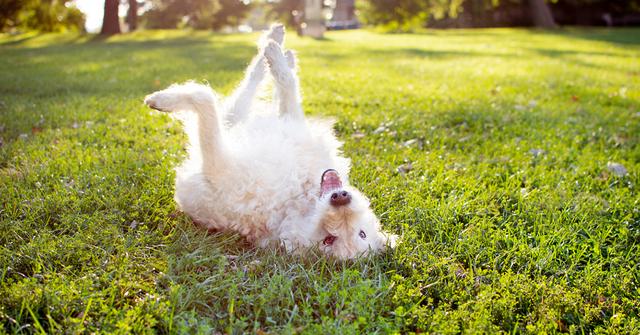As responsible pet owners, we want to ensure the safety and well-being of our furry companions. When it comes to lawn care, fertilizers play a crucial role in keeping our lawns lush and healthy. However, it’s essential to be aware that these fertilizers can pose potential risks to our beloved pets. In this comprehensive guide, we’ll delve into the topic of how long to keep pets off a fertilized lawn, exploring the potential hazards, explaining the recommended waiting periods, and providing practical tips to protect our pets.

Image: animalia-life.club
Understanding the Hazards of Fertilizers
Fertilizers provide essential nutrients for plant growth, but they can also contain chemicals that can be harmful to animals. Common ingredients in fertilizers include nitrogen, phosphorus, and potassium. Nitrogen-based fertilizers, such as urea and ammonium nitrate, can cause gastrointestinal issues if ingested by pets. Phosphorus compounds can lead to muscle weakness and heart problems. Potassium, when consumed in excessive amounts, can result in digestive disturbances.
Recommended Waiting Periods
To minimize the risk of pet exposure to fertilizer chemicals, it’s crucial to establish a waiting period before allowing them back on the lawn. The recommended waiting period varies depending on the type of fertilizer used and its concentration.
- Granular Fertilizers: These are typically spread by hand or with a spreader. After applying granular fertilizers, it’s advisable to keep pets off the lawn for at least 24 hours.
- Liquid Fertilizers: Liquid fertilizers are diluted with water before application. For these fertilizers, a waiting period of 24 to 48 hours is generally recommended.
- Weed-and-Feed Products: These products combine fertilizer with weed control chemicals. They require longer waiting periods, typically ranging from 48 to 72 hours.
It’s important to note that these waiting periods are generalized guidelines. Always refer to the manufacturer’s instructions on the fertilizer packaging for specific recommendations.
Expert Insights and Actionable Tips
Veterinarian Dr. Jennifer Williams emphasizes, “The health of our pets should always be the top priority. It’s best to keep them off fertilized lawns until the chemicals have had sufficient time to break down and become less concentrated.”
Here are some practical tips to keep your pets safe:
- Restrict pet access to the lawn during and after fertilizer application.
- Keep pets away from fertilizer bags and equipment.
- Sweep up any excess fertilizer granules and dispose of them properly.
- Rinse pets’ paws with clean water if they come into contact with fertilizer.
- Monitor pets for any signs of illness, such as vomiting, diarrhea, or skin irritation. If you suspect exposure, contact your veterinarian immediately.

Image: www.greenmatters.com
How Long To Keep Pets Off Fertilized Lawn
Creating a Pet-Friendly Lawn
While fertilizers may enhance the appearance of our lawns, pet owners should consider alternative options to ensure a safe and healthy environment for their companions. Organic fertilizers, such as manure or compost, pose less risk to pets. Additionally, avoiding herbicides and pesticides can further reduce the potential hazards.
By following these guidelines and embracing pet-friendly lawn care practices, we can enjoy thriving lawns while safeguarding the well-being of our beloved fur babies. Remember, responsible pet ownership extends beyond providing food and shelter; it encompasses protecting their health and happiness, even in the seemingly mundane task of lawn care.